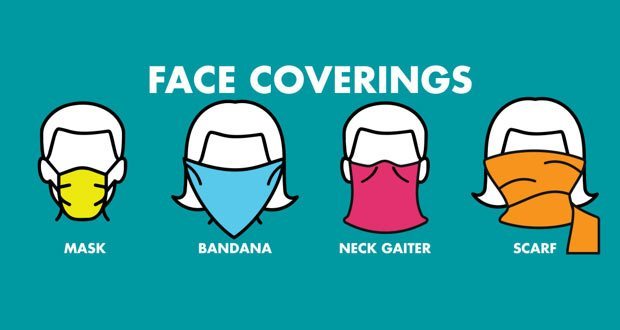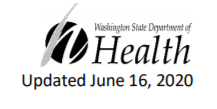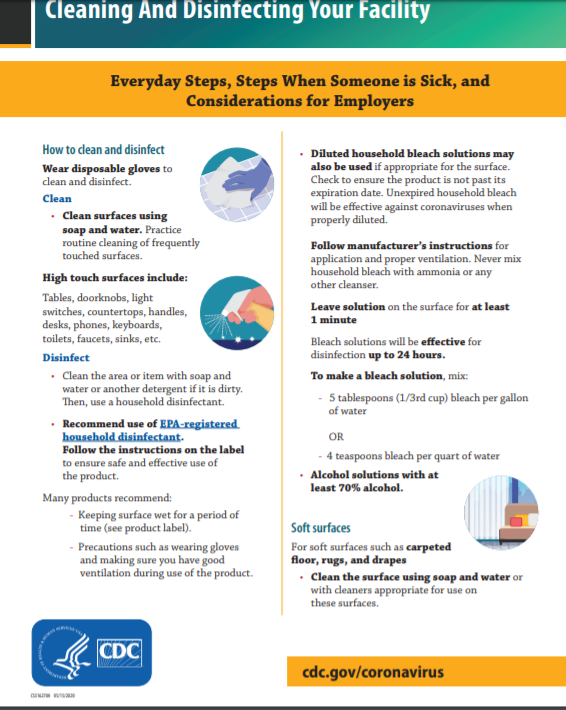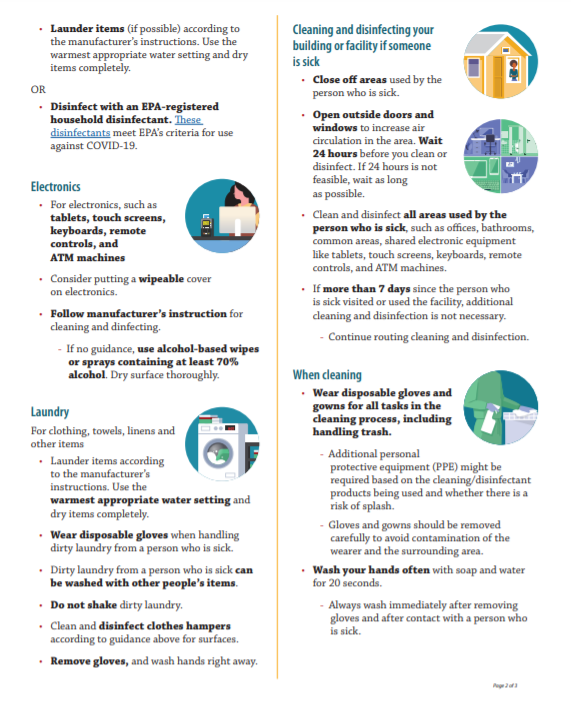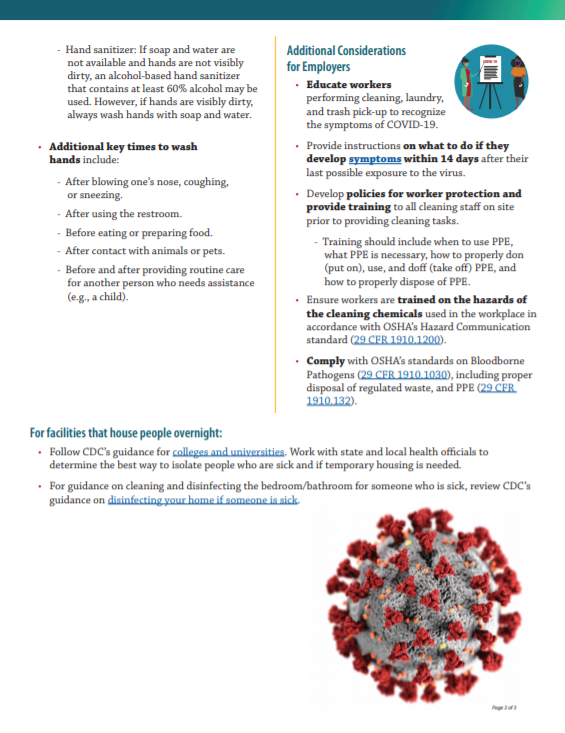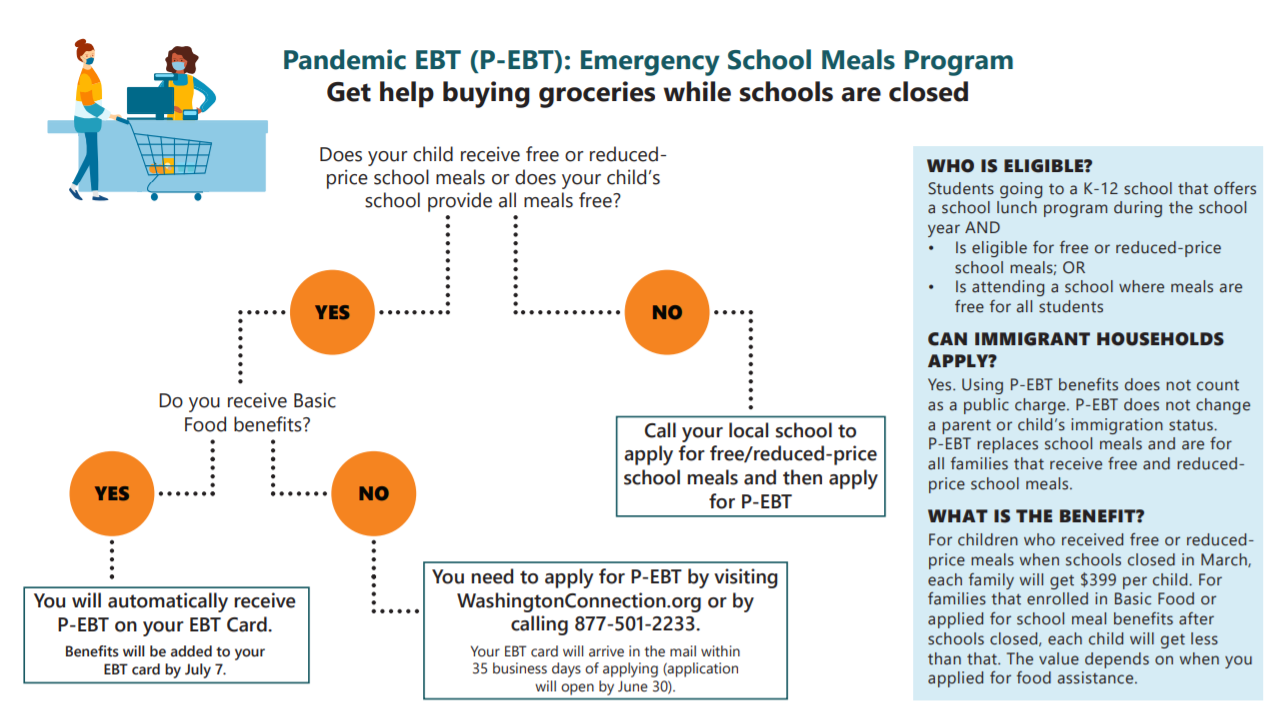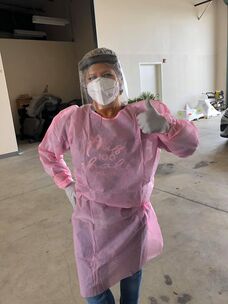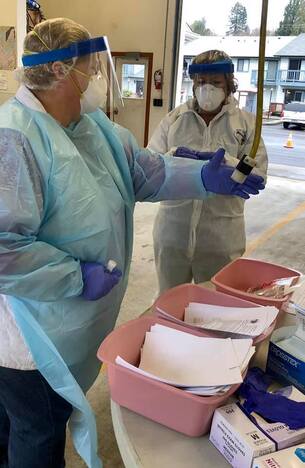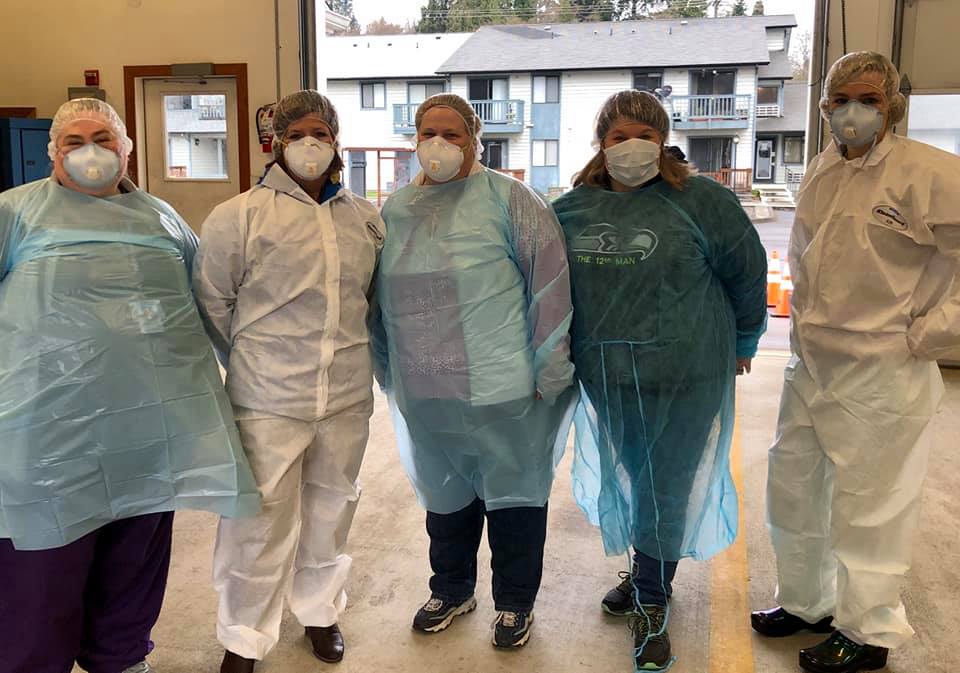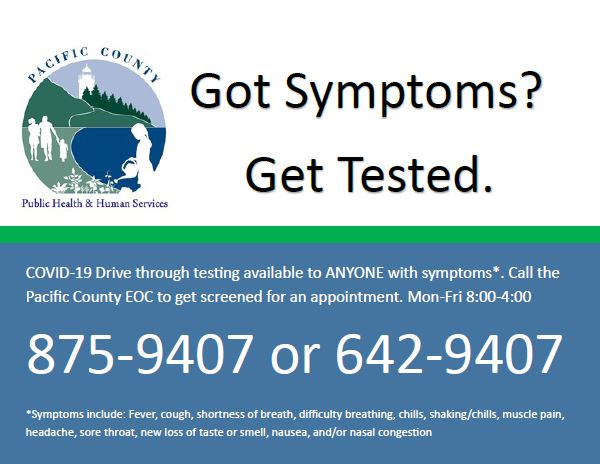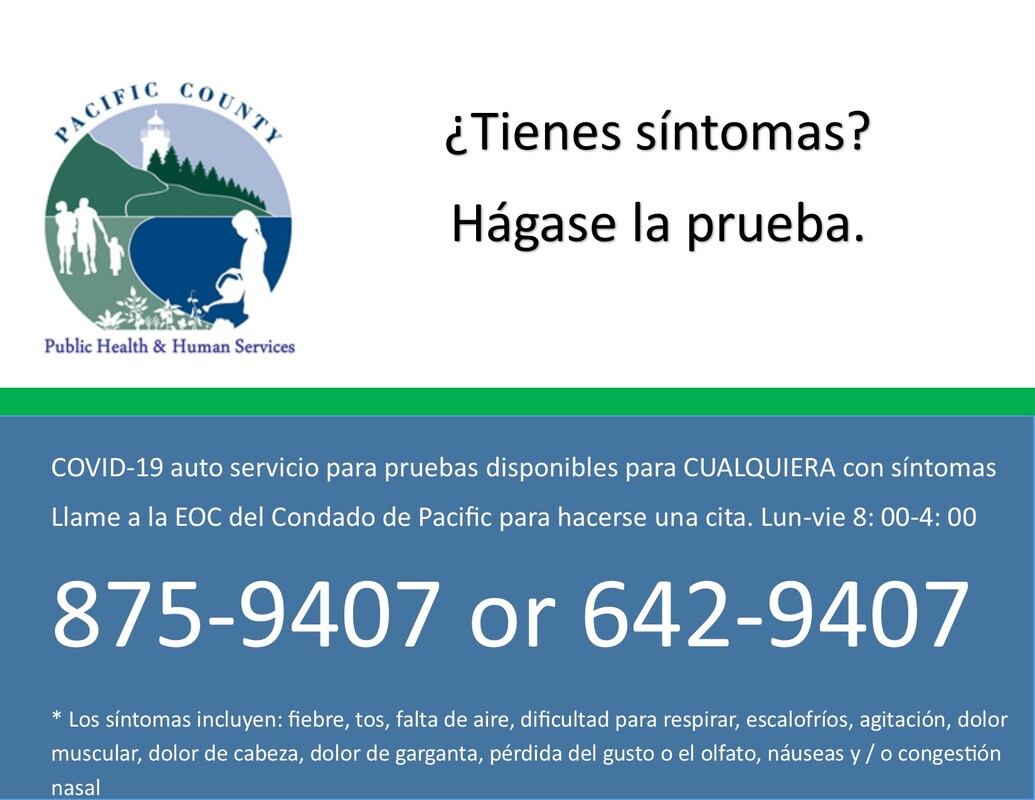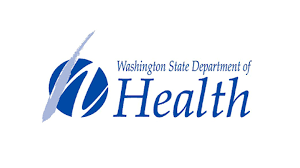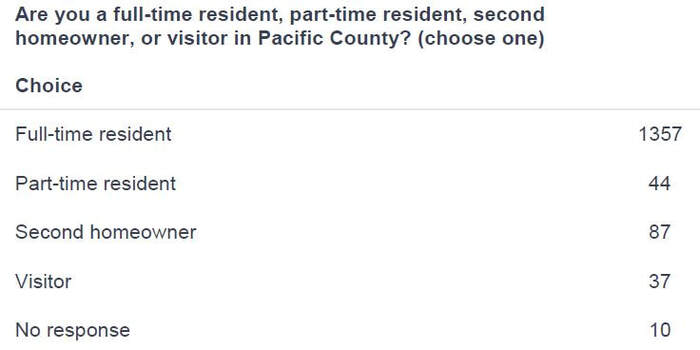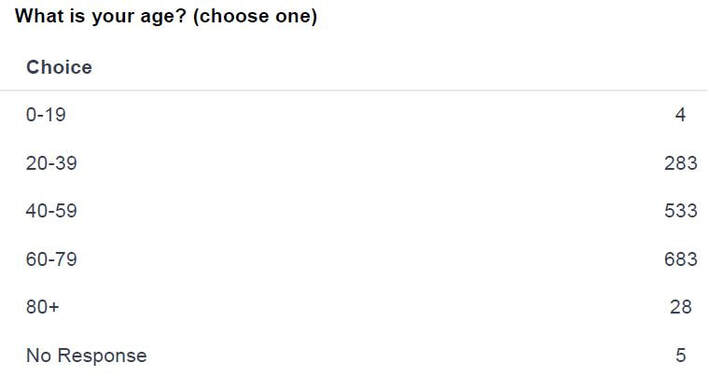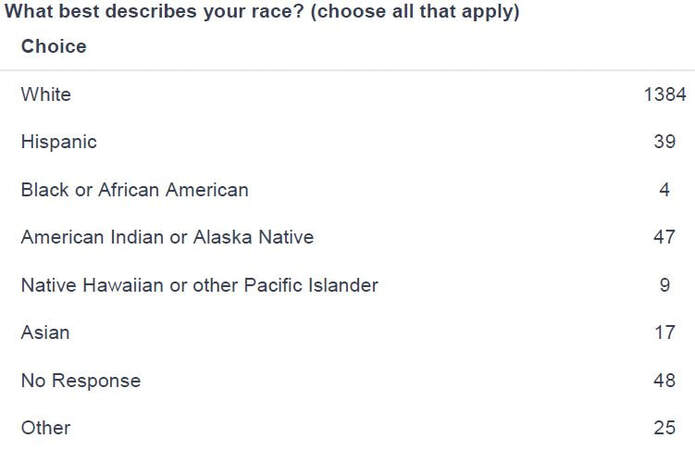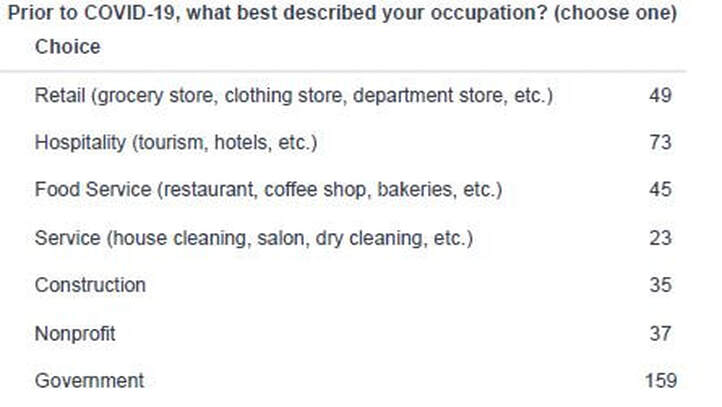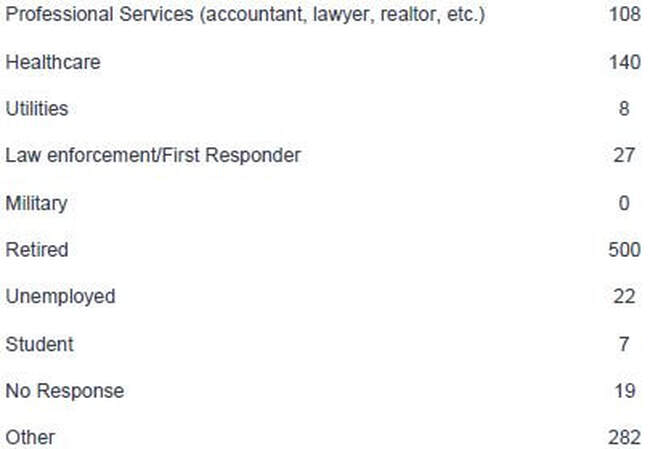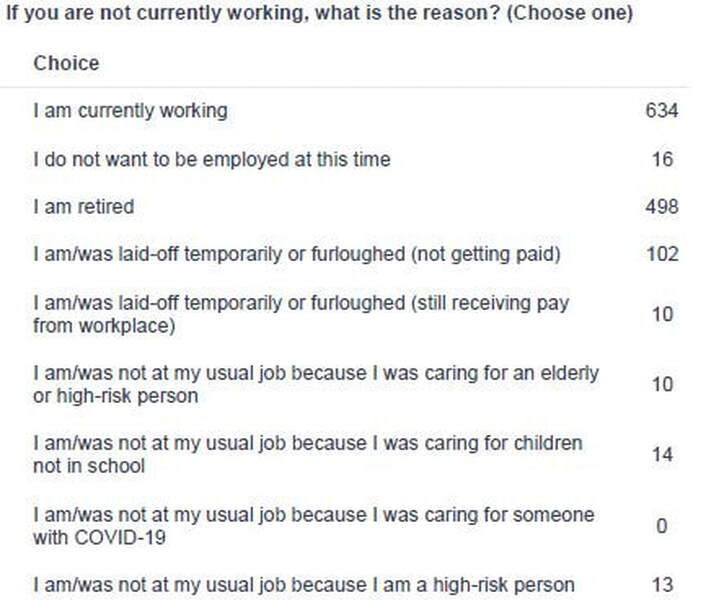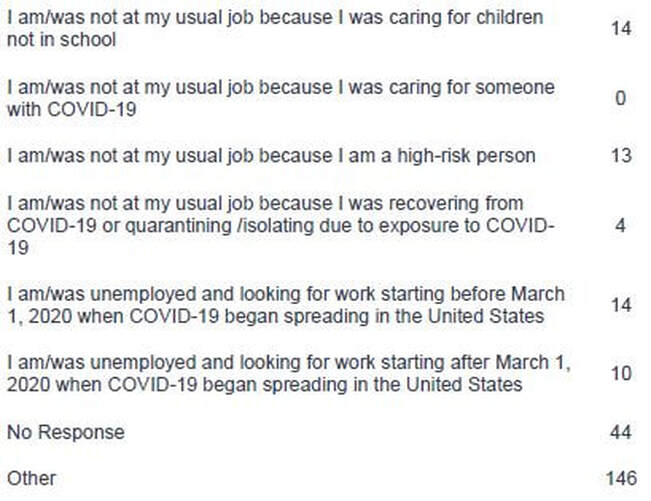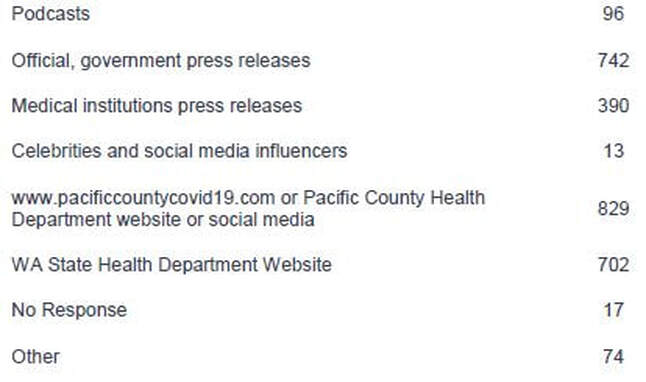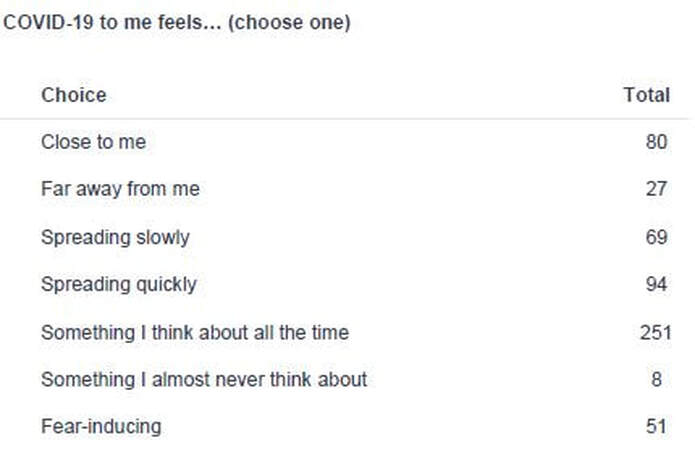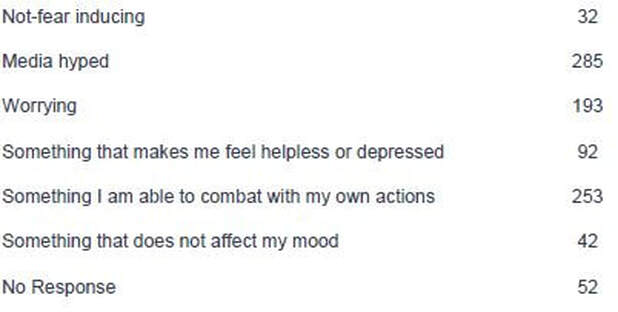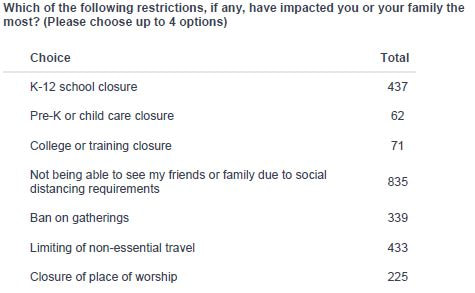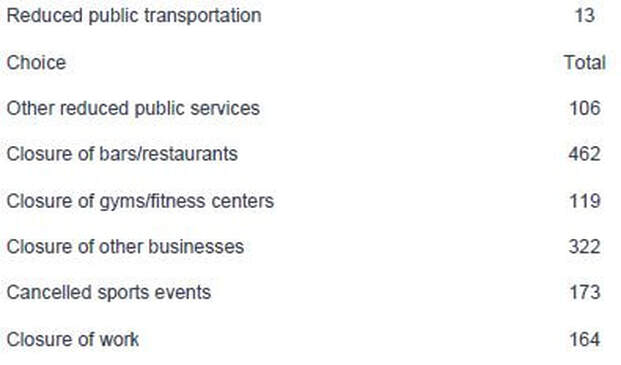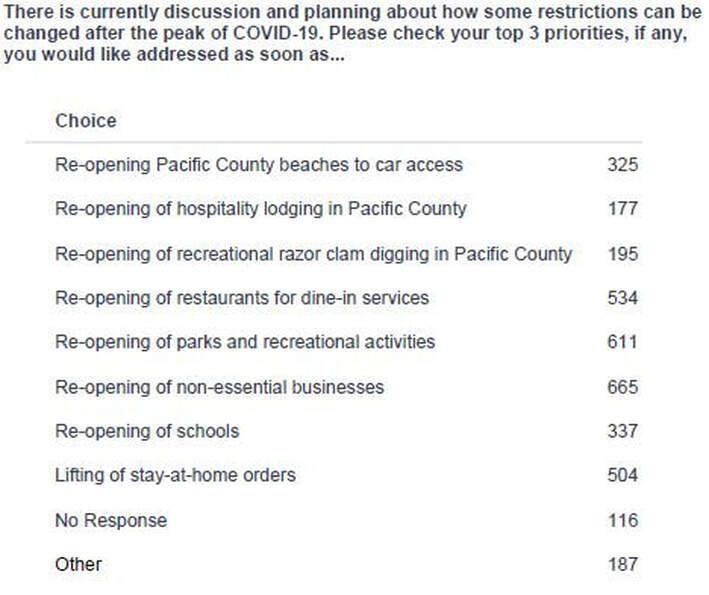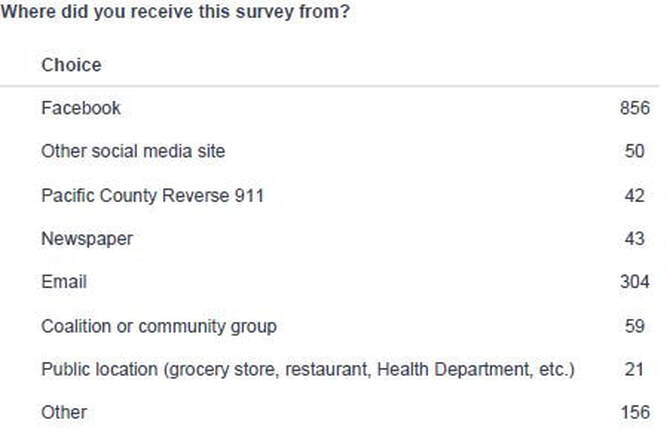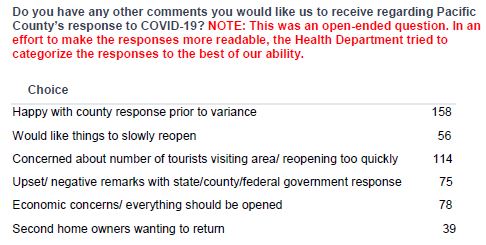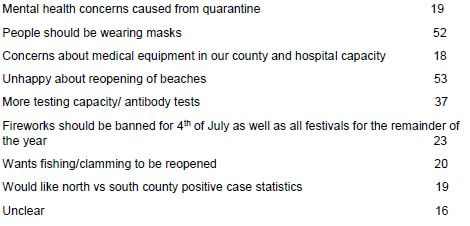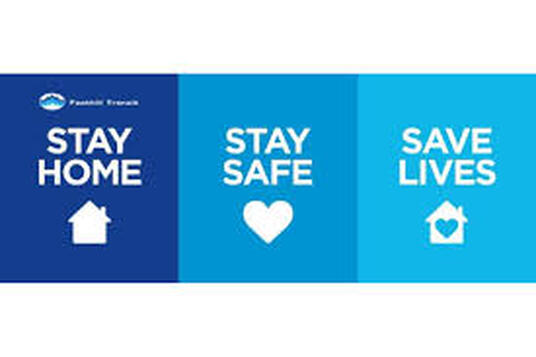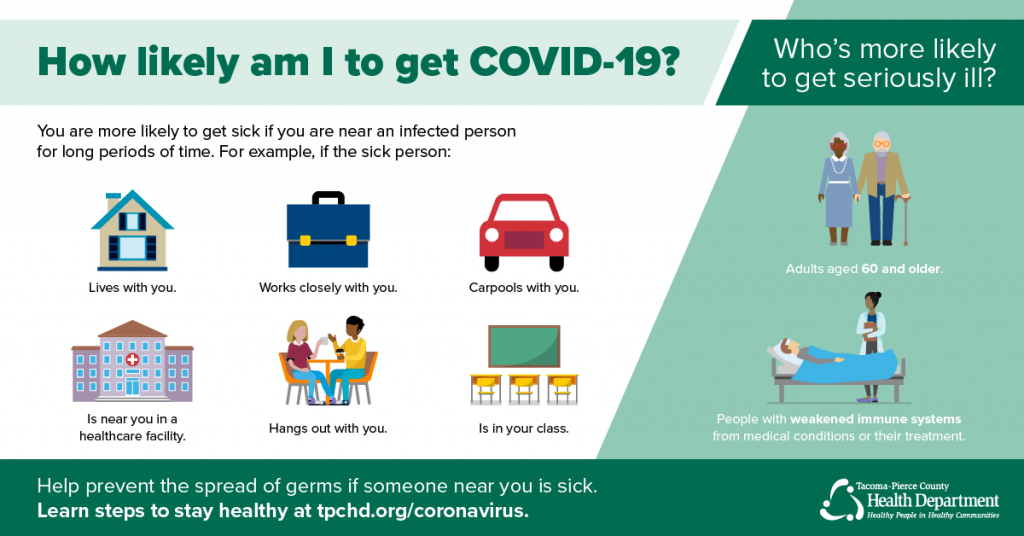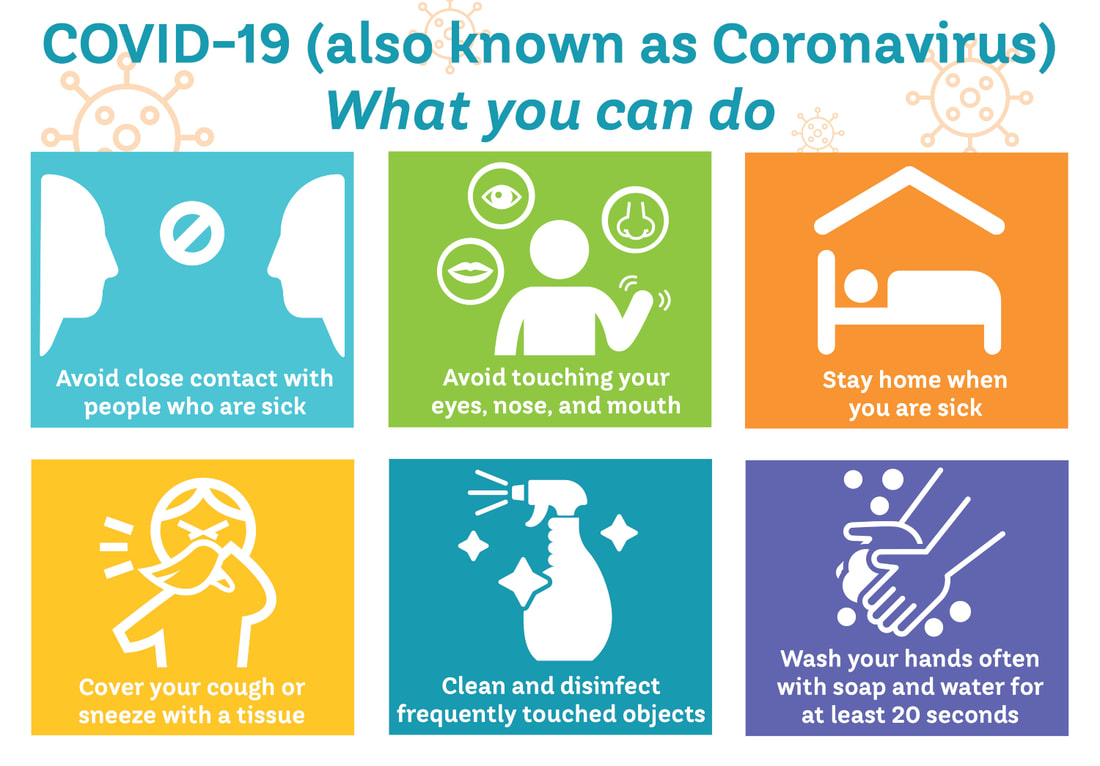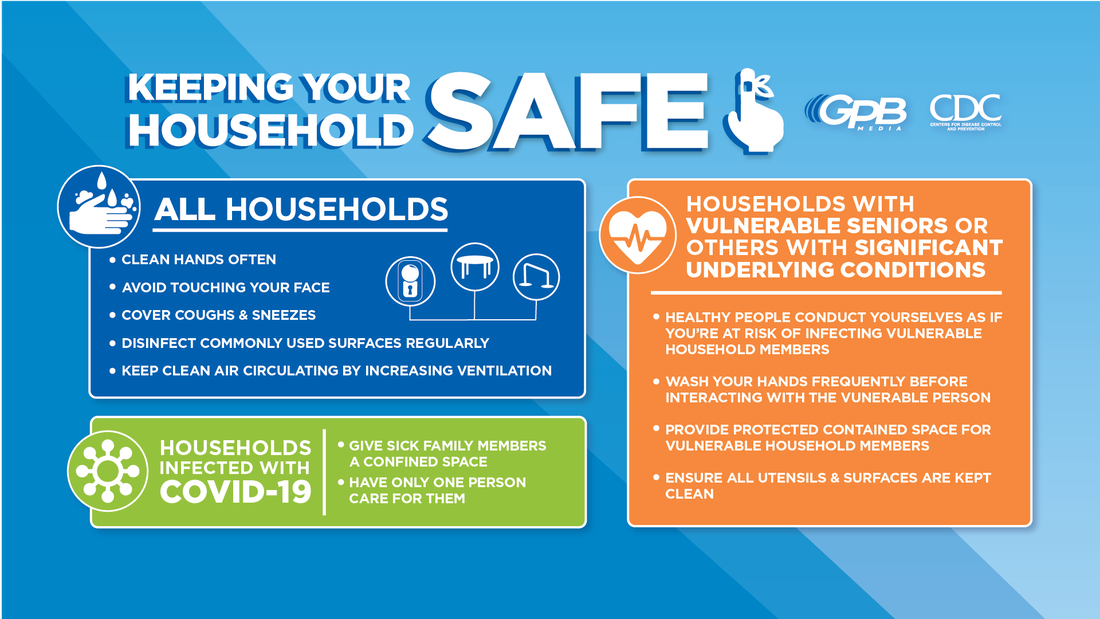|
Information courtesy of the Washington State Department of Health June 26, 2020 Read original article here. First things first... Practice Compassion! If you see someone not wearing their mask, just respectfully leave them alone. Some people have medical reasons not to wear a mask. Top 10 Reasons to Wear a Mask
Need more reasons? Check out the Department of Health website and the Governor’s coronavirus page.More information from the Washington State Department of HealthStay tuned to their blog for more information on how you can help stop the spread of COVID-19. Sign up to be notified whenever new articles are posted. Information in this blog changes rapidly. Check the state's COVID-19 website for up-to-date and reliable information at coronavirus.wa.gov. Answers to your questions or concerns about COVID-19 in Washington State can be found on the DOH website. You can also contact their call center at 1-800-525-0127 between the hours of 6am - 10pm, seven days a week.
5 Comments
What we do know
This means that people who feel healthy need to wear a cloth face covering in public places—especially indoors—and stay at least six feet away from other people.
And, no, wearing a cloth face covering is not at all likely to restrict your oxygen or make you breathe too much carbon dioxide or affect your immune system. If you feel dizzy or light headed, or have trouble breathing, sit down and remove your mask. If it continues, call 911. Numbers. The latest numbers are updated on the DOH webpage. As of 11:59 p.m. on June 21, there are 477,204 people in Washington who have been tested for COVID-19. Of those, 28,870 people (or 6.0%) have tested positive for COVID-19. Of those, 4,062 people had to be hospitalized, and 1,276 people (or 4.4%) have died of the disease. Practice compassion. “Everyone shall wear a mask. Those who are not doing so are not showing their independence—they are only showing their indifference for the lives of others.” Sydney Morning Herald, February 3, 1919. Even before the modern research, people understood that wearing a mask is an act of compassion for others.
This guidance describes safe cleaning and disinfecting practices for businesses, parks and other public spaces to ensure cleanliness and safety. Find safe operating guidance for food service, schools ad childcare on the DOH Resources and Recommendations website. To control the spread of COVID-19 everyone must exercise the following important preventative measures to protect others and themselves.
In addition to physical distancing, cloth face coverings, and hand washing, reduce the risk of exposure to COVID-19 by cleaning and disinfecting our workplaces and homes safely. Personal Hygiene
Cleaning and DisinfectionCleaning refers to the removal of dirt and impurities, including germs, from surfaces using soap or detergent. Cleaning alone does not kill germs, but thorough cleaning will significantly decrease their numbers and lower the risk of spreading infection. Sanitizing reduces germs on surfaces to levels that are safe. Disinfecting kills germs on surfaces. Establish a schedule for cleaning and disinfecting frequently touched surfaces, service counters, bathrooms, and athletic areas based on their use. Commercial kitchens, medical facilities, and childcare facilities need to follow their specific regulations for appropriate cleaning, sanitizing, and disinfection. 1. How to clean and disinfect
2. Guidance for specific areas and surfaces. Frequency will depend on useClean and disinfect elevator buttons, door handles, push bars, automatic door buttons, and other high-touch surfaces routinely. Cleaning and disinfect high touch areas four times per day, depending on use. Shared restroomsThoroughly clean and disinfect restrooms, including all high touch areas such as door handles, flush buttons or levers, counters, sink and shower handles, and light switches. Keep restrooms stocked with soap and paper towels. At remote locations without running water, provide alcohol-based sanitizers. Clean and disinfect high use restrooms twice a day if possible. At remote restrooms that cannot be cleaned and disinfected regularly, post signs to that effect and remind people to wash their hands thoroughly. Ensure exhaust ventilation systems are running continuously and as much fresh air is coming in as possible. If safe, keep windows open to increase ventilation. Public drinking fountains and bottle fillersClean and disinfect the button or lever. Public drinking water supplies are safe. Clean and disinfect surfaces and buttons. Consider posting signage that includes:
Keyboards and other sensitive electronicsUse alcohol wipes or spray 70% isopropyl alcohol into a cloth to wipe electronics. Use a separate area of the cloth for each device. Wash and dry cloths after use. Wash hands before and after use of electronics and do not touch your face while using. Do not share items if you do not need to. Athletic equipmentThoroughly clean and disinfect all surfaces that may contact skin at least daily and between use by different people. Surfaces (including mats) must be intact, without rips and tears, to be cleanable. Have separate cleaning mops and buckets for athletic areas. BusesClose seating on buses makes person-to-person transmission of respiratory viruses more likely. Reduce the number of riders to maintain a physical distance of 6-feet between riders and encourage riders to wear cloth face coverings. Keep windows open to reduce virus transmission, including airing out the bus between routes. Clean seats and rails with soap, water, and microfiber cloths. Disinfect handrails with an EPA approved disinfectant. PlaygroundsDo not spray disinfectants on outdoor playgrounds. Clean if needed. Require children to wash their hands with soap and water when they come inside or prior to eating or drinking. Face-to-face respiratory droplet transmission of children playing close together is the primary concern for virus transmission. Encourage children to maintain a physical distance of 6-feet from other children they do not live with. Children's ToysWash soft or porous children’s toys in the highest water temperature appropriate for the item and dry completely. Clean hard plastic toys thoroughly. In general, thorough cleaning with soap and water is all that is necessary. Disinfectants can be harmful to children, especially if small children put them in their mouths. Select chemicals carefully and consider:
Soft (porous) surfacesSurfaces such as carpeted floor, rugs, and drapes require only routine cleaning appropriate for the surface. Follow manufacturer’s instructions to launder items. Use the warmest water possible and dry completely. To clean carpets use truck-mounted hot water/steam extraction. Spot treat as needed first. Use the minimum amount necessary of low-odor and low-sudsing carpet shampoo. Thoroughly remove cleaner and dirt. The water should run clean. Carpet should dry thoroughly within 24 to 48 hours to prevent mold and bacterial growth. Ventilation SystemsThere is no special cleaning or disinfection recommended for heating, ventilation, air conditioning (HVAC) systems. If the HVAC system uses a cooling tower, ensure proper maintenance prior to reopening after extended closures. For more information about cooling towers and HVAC systems see: Ventilation is an important part of maintaining good indoor air quality and reducing transmission of respiratory diseases. Ventilate with as much outside air as possible before, during and after occupancy, and while cleaning and disinfecting. Open windows when possible. Upgrade to MERV 13 filters where feasible. Filters must fit tightly. Two-inch pleats provide greater filtration with less pressure drop. Cleaning and disinfecting an area after a person with confirmed or suspected COVID-19 has been in a facilityIf it has been more than 7 days since the sick person visited or used the facility, additional cleaning and disinfection is not necessary. If it has been less than 7 days:
Additional cleaning and disinfection guidance
More COVID-19 Information and ResourcesStay up-to-date on the current COVID-19 situation in Washington, Governor Inslee’s proclamations, symptoms, how it spreads, and how and when people should get tested. See our Frequently Asked Questions for more information.
The risk of COVID-19 is not connected to race, ethnicity or nationality. Stigma will not help to fight the illness. Share accurate information with others to keep rumors and misinformation from spreading:
Have more questions about COVID-19? Call our hotline: 1-800-525-0127. For interpretative services, press # when they answer and say your language. (Open from 6 a.m. to 10 p.m.) For questions about your own health, COVID-19 testing, or testing results, please contact your health care provider. Washington State Has Been Approved to Operate the Pandemic EBT (P-EBT) ProgramWhat is the P-EBT?P-EBT is a new and temporary food benefit to help families buy groceries. It works like a debit card, and can be used anywhere that accepts SNAP benefits. ALL kids who qualify for free or reduced lunch can receive the benefit of $5.50 per day per child, which for many families will be up to $399 per kid. Who can receive P-EBT?Students enrolled in a K-12 school that offers a school lunch program during the normal school year AND - Is eligible for free or reduced-price school meals OR - Is attending a school where meals are free for all students such as a Provision 2 or Community Eligibility Provision School Can Immigrant Households Apply?Yes. Using P-EBT benefits does not count as a public charge. P-EBT does not change a parent or child’s immigration status. P-EBT replaces school meals and are for all families that receive free and reduced price school meals How can I access these services?
Frequently Asked Questions
Food PromotionFind delicious, budget-friendly and family-friends recipes below. Print and enjoy with your family tonight! For additional recipes click here.
June 11, 2020Four additional counties approved to advance to next phase of Safe Start planYesterday, Washington State Secretary of Health John Wiesman approved three additional counties to move into the next phase of Gov. Jay Inslee’s Safe Start plan. Chelan and Douglas counties are approved to move into a modified version of Phase 1 and Asotin and Skamania Counties are approved to move from Phase 2 to Phase 3. Chopp announces Cap Gains and Employment Head Tax ProposalFormer Speaker Rep. Frank Chopp (D-Seattle) announced a plan today for a $2B COVID-19 recovery based on a cap gains and employment head tax. View HERE. Washington schools expected to reopen this fall with in-person learningWashington’s Superintendent of Public Instruction said Thursday that he expects school districts to reopen buildings and return to in-person learning next school year — as long as public health guidelines allow them to do so. Chris Reykdal, the state’s superintendent of public instruction, and a work group of more than 120 educators, parents, students and community organizations released a 47-page document with new guidance Thursday that lays out what face-to-face instruction could look like come fall. Counties in Phase 1The below counties are currently in Phase 1:
Specific Guidance for Phase 1Below you'll find specific guidance for the above counties: Essential Business GuidanceMany parts of the economy are already allowed to operate safely as essential businesses. For a list of essential businesses click here.
Counties in Phase 2The below counties are currently in Phase 2:
Specific Guidance for Phase 2Below you'll find specific guidance for the above counties:
Counties in Phase 3The below counties are currently in Phase 3:
Specific Guidance for Phase 3Below you'll find specific guidance for the above counties:
New COVID-19 Proclamations
New Guidance Provides Hopeful Outlook for Next School YearThe guidance provides schools with the health and safety guidelines needed to begin planning for a safe fall return. OLYMPIA—June 11, 2020 ”Nothing we have been through these past three months was in the training manual,” begins the letter from Superintendent Chris Reykdal in new guidance on reopening schools in the fall. “This guidance is grounded in my belief that the most equitable opportunity for educational success relies upon the comprehensive supports for students provided in our schools with our professionals and the systems of supports we have built,” he later states. Today (June 11th) , the Office of Superintendent of Public Instruction (OSPI) released guidance that lays a framework for schools to begin planning what their return to school in the fall looks like. The guidance was developed in partnership with the state Department of Health (DOH); the Governor’s Office; the Department of Labor and Industries; and a broad stakeholder group of more than 120 educators, practitioners, parents, community-based organizations, legislators, and students. “Learning is a social activity, and we want to see our students back in the classroom,” Reykdal said. “Protecting the health and safety of our students and staff is our top priority. If schools can meet the guidelines laid out today by DOH, they will likely be able to open their doors in the fall for in-person instruction.” While face-to-face learning is the goal, the guidance includes three concepts for school districts to consider adapting and building from should they be limited in face-to-face learning in the fall:
How a district reopens school will be decided in partnership with their students, staff, families, and their local health authority. While reopening is not tied to the Governor’s Safe Start Plan, districts in Phase 1 or Modified Phase 1 must receive approval to reopen from their local health authority. “Today we are setting a path for moving forward with school activities in the summer and school reopening in the fall,” said Governor Jay Inslee. “We have been working closely with Superintendent Reykdal and his staff at OSPI, state Department of Health, the Department of Labor and Industries, and a wide range of stakeholders across the state to ensure the health of all students and educators,” he continued. “We all want students back in educational settings, but we must continue to monitor health data carefully, and proceed with caution,” Gov. Inslee continued. “This virus is unpredictable and has upended our regular ways of doing everything. Therefore, if COVID cases spike or spread, we may need to reassess this plan. We cannot guarantee that school facilities will open in fall. But for now, this guidance provides a path that schools, educators, and families need to plan for the coming months and the fall. Kids need to be learning but they also need to be safe and healthy.” School districts that meet in person will be required to follow the Department of Health’s health and safety guidelines, including requirements around physical distancing, face coverings, and personal protective equipment (PPE). “Schools are foundational to student, family, and community health and well-being,” said State Health Officer Dr. Kathy Lofy. “DOH guidance provides health and safety measures to reduce the risk for spread of COVID-19 so that students have access to the critical physical, mental, and social health benefits school provides.” More Information
The Washington State Department of Health wants to keep you as informed as possible about continuing developments surrounding COVID-19 as well as guidance and resources you can share. Let's go over what happens if you get exposed to COVID-19, from beginning to end. What if I get contacted by my health department?
QuarantineIf you have been identified as a close contact of someone who has tested positive for COVID-19, you will be asked to quarantine. This means staying in your home for 14 days. If you have kids or other family members in your household, they can still leave the house, but if you get sick, they will have to stay home too! During this time, you are feeling just fine. Maybe worried. Maybe jealous because your family members can leave the house. You’ll be monitoring your health—taking your temperature every day. You’re probably getting a call every day or so from one of our friends at the health department to make sure you have everything you need. They will help you out if you need to get food, medication, or other supplies picked up without leaving your house. Count down the days! After 14 days, if you have been healthy this whole time—no fever, no cough, no other symptoms associated with COVID-19--you can leave your house again! But, if you do get sick, the health department will ask you to isolate yourself from other people as completely as possible. IsolationIsolation is very important so you do not spread COVID-19 to anyone else. When you are in isolation, you are feeling sick. Your family members who live in your house with you are quarantined. They need to stay in the house but away from you! You will need to stay isolated for at least 10 days and until your fever has been gone for three days, and the rest of your symptoms are much better. You’ll continue to hear frequently from someone at the health department, who will help make sure you have everything you need so you do not need to leave the house. Testing
Once you test positive for COVID-19, someone from the health department will ask you who you have been in close contact with during the time period when you could have been contagious (when you feel sick plus about 2-3 days before you started to feel sick). If you have been quarantined, this is most likely no one outside of your immediate household. If you have been in public, you will let the health department knows who has been within six feet of you for more than 15 minutes. Get Tested in Pacific CountyDrive through testing for COVID-19 has been expanded to include anyone with one or more of the following symptoms in Pacific County:
Then the process starts all over again as the health department calls your close contacts and asks them to quarantine so they don’t spread COVID-19 to anyone else. This strategy is a trusted public health approach that has been used here in Washington and all over the world for decades to stop the spread of contagious diseases like tuberculosis, measles, Ebola, SARS, and, now, COVID-19. Our experience with other contagious diseases tells us that, with your help, we can control COVID-19, and safely reopen our economy. Practice CompassionHas someone you know had to quarantine or isolate themselves because of an exposure to COVID-19? How can you help? Can you drop off a meal or send a text to check in on them?
You have questions, we have answers. |
|
|
|
Testing is offered on both ends of the county by appointment only. To get screened for an appointment, please call the Emergency Operations Center Monday - Friday , 8:00am - 4:00pm at 360-875-9407 or 360-642-9407
South Bend - Monday's from 1:00pm - 4:00pm & Wednesday's from 9:00am - 12:00pm
Long Beach - Tuesday's from 1:00pm - 4:00pm & Friday's from 9:00am - 12:00 pm
Long Beach - Tuesday's from 1:00pm - 4:00pm & Friday's from 9:00am - 12:00 pm
How can I protect myself and others?
There are steps you can take to reduce your risk of getting and spreading coronavirus:
- Wash your hands often with soap and water for at least 20 seconds. Use an alcohol-based hand sanitizer that contains at least 60 percent alcohol if soap and water aren't available.
- Avoid touching your eyes, nose, or mouth with unwashed hands.
- Avoid close contact with people who are sick.
- Cover your mouth and nose with a tissue when you cough or sneeze, then throw the tissue in the trash and wash your hands.
- Clean and disinfect objects and surfaces.
- Stay home if you are sick. Stay home as much as possible. Follow Governor Inslee’s Stay Home, Stay Healthy order.
- Stay six feet away from others.
- Follow recommendations from your local health department.

